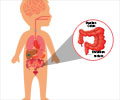Researchers have developed intestinal tissue along with nerve supply to study various disorders affecting the intestines.
- Intestinal tissue with nerve supply has been identified in the laboratory
- The tissue can be used to study genetic conditions like Hirschsprung disease, which affects the nerve supply of the large intestine
- The tissue has the potential to be used for organ transplantation in the future
Moving a step forward, researchers introduced neural crest cells into the growing intestinal cells at the right time, and were able to develop intestinal tissue with nerve supply. The tissue resembled human intestinal tissue in terms of structure as well as function.
The researchers used the tissue to study a condition called Hirschsprung Disease or toxic megacolon. Hirschsprung disease is a genetic disorder where the wall of the large intestine lacks nerves and therefore cannot contract. The researchers introduced a mutation in the gene PHOX2B, which occurs in Hirschsprung disease. They were able to demonstrate that the mutation affects the nerves of the intestine, similar to Hirschsprung disease.
The newly developed tissue has several potential uses in research as well as therapeutics. It can be used to study other intestinal conditions like necrotizing enterocolitis. It can also be used as a medium to test medications before they can enter clinical trials. This form of testing can prove if the drug can produce symptoms like diarrhea and cramps.
From a therapeutic point of view, the tissue has the potential to be used for transplantation. Such use of the tissue will reduce the dependency on donors and reduce waiting time for transplantation. In fact, the researchers were able to transplant the tissue into laboratory mice and found that it functions just like the normal intestine.
- Workman MJ et al. Engineered human pluripotent-stem-cell-derived intestinal tissues with a functional enteric nervous system. Nature Medicine, 2016; DOI: 10.1038/nm.4233











